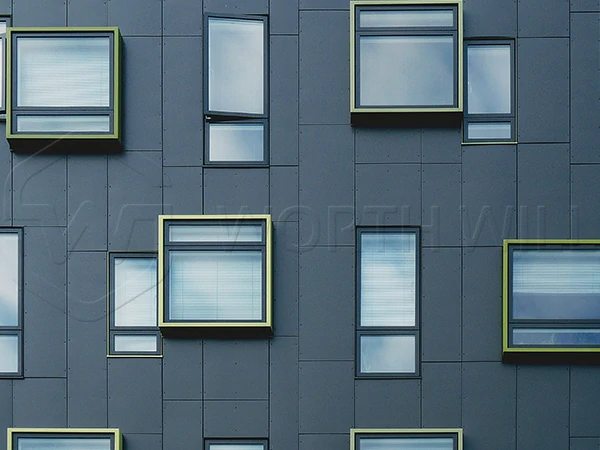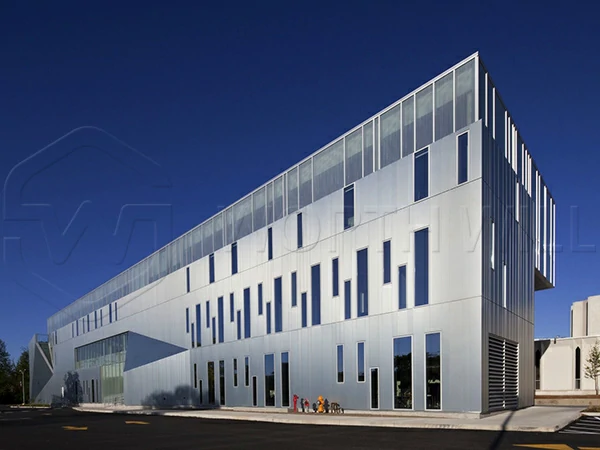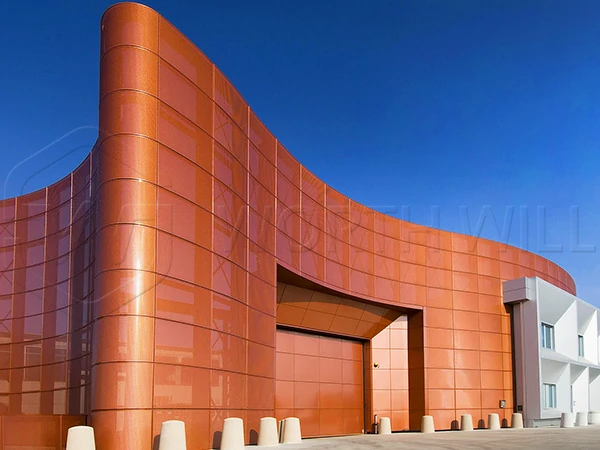Aluminum Facades
- Home
- Aluminum Facades
Aluminum facades are a popular architectural choice known for their versatility, durability, and aesthetic appeal. They have a wide range of applications and in various building types. From residential to commercial and industrial structures.


What Uses
Commercial Buildings: Commonly used in the construction of commercial buildings, such as office complexes, shopping malls, and hotels. They provide a sleek, modern look. This can have customization to meet specific design requirements.
Residential Structures: Many modern homes incorporate aluminum facades for their exterior cladding. Aluminum siding is lightweight, easy to maintain. And It has in various colors and textures to suit the homeowners’ preferences.
Educational Institutions: Educational buildings, including schools and universities, often utilize aluminum facades. These facades can withstand heavy foot traffic and exposure to the elements while maintaining their appearance.
Cultural and Recreational Facilities: The use of aluminum facade in theaters, museums, and sports facilities is growing. Due to their capacity to accommodate unique and eye-catching architectural designs.
Industrial Facilities: Industrial structures benefit from aluminum facade for their durability and resistance to harsh environmental conditions. Aluminum's corrosion resistance is particularly advantageous in these settings.
Healthcare Facilities: Hospitals and healthcare institutions incorporate aluminum facade because of their clean, contemporary appearance and easy cleaning and maintenance.
Advantages
Durability: Aluminum is inherently resistant to corrosion, making it a durable choice for building exteriors. It can withstand exposure to rain, sunlight, and pollutants, ensuring a long lifespan for the facade.
Lightweight: Aluminum is exceptionally lightweight, making it easier to transport and install. This also reduces the overall load on the building's structure.
Customization: Aluminum facades offer a wide range of customization options. They can be shaped, perforated, textured, or painted. In various colors to match the architectural design and branding of the building.
Energy Efficiency: Aluminum facade can improve a building's energy efficiency. They have the design to accommodate thermal insulation. Reducing heat transfer and enhancing the building's overall energy performance.
Low Maintenance: Aluminum requires minimal maintenance, reducing the long-term costs associated with facade upkeep. Regular cleaning and occasional inspections are usually all that’s required to keep it looking pristine.
Recyclability: Aluminum is an environmentally friendly material, as it is fully recyclable. This makes it a sustainable choice for green building practices.


How thick is aluminum facade?
The thickness of aluminum facades can vary depending on the specific project and requirements.
In general, aluminum panels for facades range from 1mm to 6mm in thickness. The choice of thickness has influenced factors. Like the intended use, wind loads, and the desired aesthetic appearance.
Used in areas with high wind loads or where additional structural support is necessary.
It’s essential to consult with architects, engineers, and facade specialists to determine the appropriate thickness for your specific project to ensure it meets the structural and design criteria.
What Is Aluminum Facades?
Aluminum facades have gained popularity in the construction industry due to their versatility, durability, and aesthetic appeal.
In a wide range of applications, offering numerous advantages.
And their thickness can be tailored to meet the demands of a particular project.
There is a valuable choice in modern architecture and building design.
